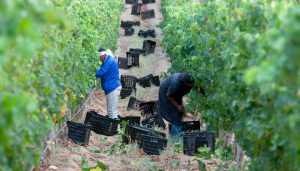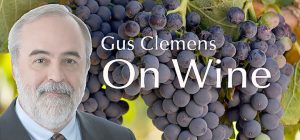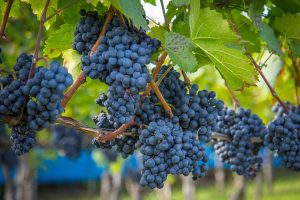“Ripeness” may be a winemaker’s most important decision. Ask three different winemakers their definition of ripeness, however, and it is possible you will get six different answers. Ripeness is just that complex.
As grapes ripen on the vine, sugar levels rise, acidity levels drop, tannins smooth out. Ripeness is a continuum. Green/herbaceous notes morph into bright fruits, then into dried fruits, then into grilled meat and coffee flavors. Acidity, too, evolves—from cutting tartness to interesting complement to flabby dullard. Tannins evolve from cheek-puckering bitterness to lush and supple.
All these processes happen together and are subsumed under a winemaker’s concept of “ripeness.” Ripeness has other influencers in addition to decisions by the grower and the winemaker—the type of grape, the land/environment (terroir), weather for a particular vintage.

With a subject so vast, we focus on one iteration: Napa cabernet sauvignon. The grape allows for a range of ripening decisions. Do you harvest early for some freshness and tannic bite or go for more ripeness? That decision largely is determined by the winemaker’s call on sugar content in the grape (measured in Brix). Since 1997, the USDA’s annual California grape crush report indicates the average sugar content did not fall below 24 degrees Brix, an amount that results in about 14.3% potential alcohol.
By 2013, the figure was 26.3 Brix, delivering 15.6% alcohol. It is likely Napa’s biggest and most expensive wines soar past that into the 16% ABV range. Napa winemakers clearly place many of their bets on very ripe, high-alcohol wines. The longer they let grapes hang on the vine, the riper they get.
Climate is another part of the equation. Warmer climates produce riper grapes irrespective of hang time. Napa has been getting warmer for decades and always has more sunshine than Bordeaux, the cab region to which it is most often compared.
Finally, there is the market. If people want richer, riper, higher alcohol wines, wineries will deliver. Even amid the challenges of a pandemic in 2020, Napa contributed some $34 billion to the U.S. economy. That is a ripe market, there for the picking.
Tasting notes:
• Faust Napa Valley Cabernet Sauvignon 2018: Relies on taste and finesse rather than brutish power. $55-58 Link to my review
• Yao Family Wines Yao Ming Cabernet Sauvignon Napa Valley 2017: Bold and delicious, a classic premier Napa cab. $85-100 Link to my review
Last round: If you had to choose between being skinny or drinking wine every day, would you choose red, white, or rosé?


